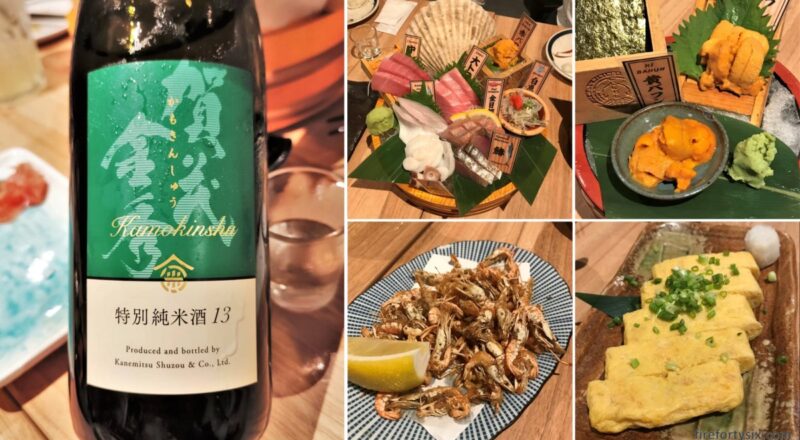The first time we ate at Izakaya Niningashi, we ordered their Sashimi DX Special with a 20gm uni upsize. And since our friend SL is such a huge uni fan, The Wife had to send her a close up of the beautifully soft and delicious lobes of bahun uni.
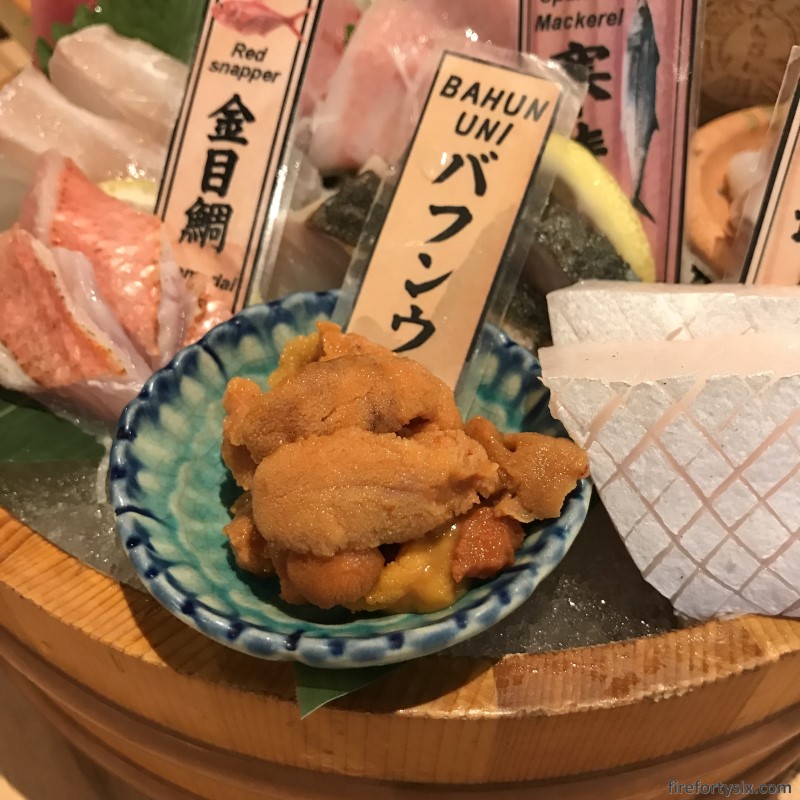
SL, of course, had a few choice words to say when she saw the photo, none of which I will reproduce here since children could be reading.
But the trolling didn’t just stop there.
About a month later, when we were at a special sake pairing event featuring uni, The Wife, once again, couldn’t stop herself from sharing some macro shots. This time, it was aka uni with a dollop of freshly-grated wasabi on a crisp sheet of nori.
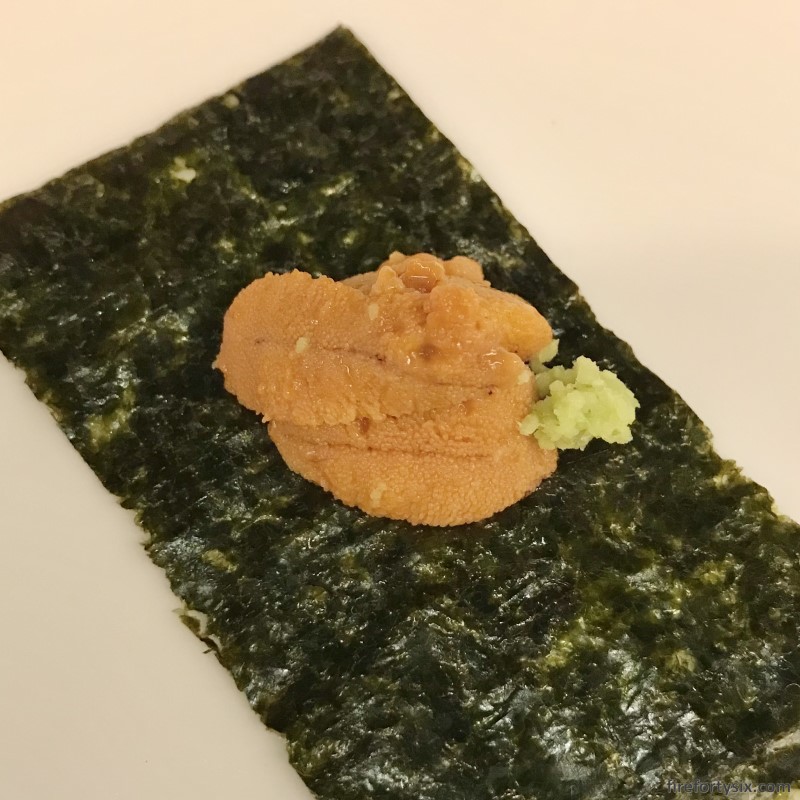
This time, SL’s choice words expanded into choice paragraphs, and we figured that we had to make it up to her quickly, or risk seriously damaging our more than decade-long friendship.
And so, we arranged for a dinner triple-date at Izakaya Niningashi, promising SL that she would get to eat as much uni as she wanted. Since our lives were at stake, we wanted to make sure that they didn’t run out, and placed an advance order for their special uni platter.
We were the first to arrive, and given that it was way past our usual 5:30 pm dinner time, we ordered some yakitori and a himono set as a pre-dinner snack.
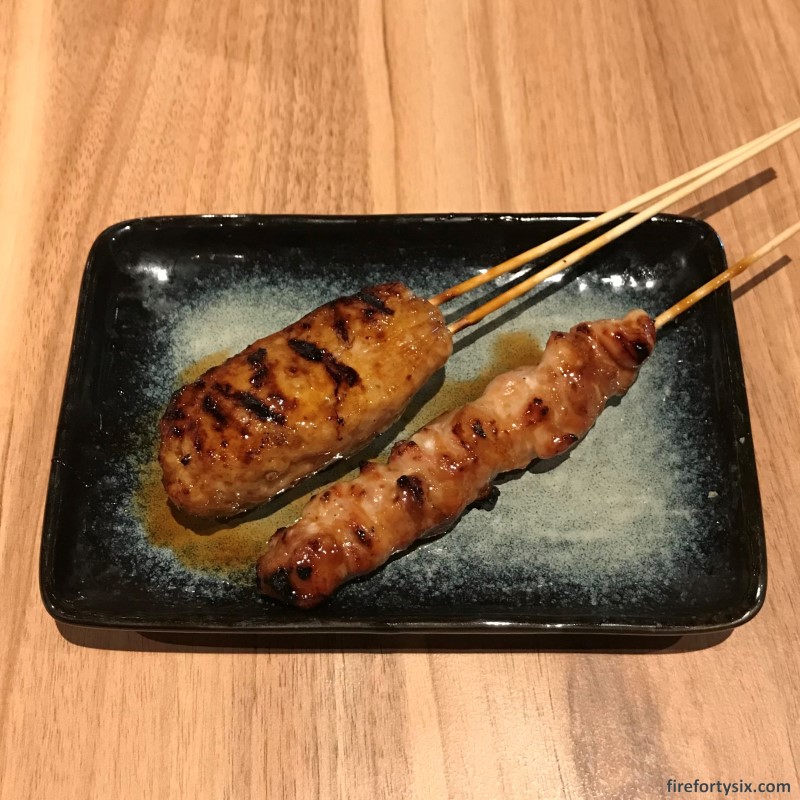
Yakitori (momo and tsukune)

The yakitori selection at Niningashi is limited and we ordered a stick each of the chicken momo (thigh) and tsukune (ball, and no, not that ball, but minced meat shaped into a ball). Both were lightly charred, super juicy and very oishii.
We had their himono set during lunch previously, and while the dinner set is slightly more expensive, the quality is just as good.
By the way, if you like yakitori, their sister outlet Izakaya Sazangaku, literally just next door, has a much wider selection. While we’ve not eaten there yet, I’m quite confident that it will be just as good, if not better.
SL and JM, her husband and my fellow sake enthusiast, soon arrived. And while we were waiting for the final couple, QY and RC, to arrive. I assigned JM the task of choosing our first bottle of sake for the night.
There was a large selection to choose from, both from their regular menu as well as their seasonal one, which, at the time, was featuring summer sakes. He didn’t have any specific favourites and decided to get a recommendation from the resident sake sommelier, an enthusiastic young chap with bold blond streaks in his hair.
After extensive consultation, including figuring out the type of sake we preferred, he suggested the Meikyoshisui Junmai Nippon no Natsu (明鏡止水 純米 日本の夏). As implied in the name, it was a summer sake, and came from a brewery in Nagano.
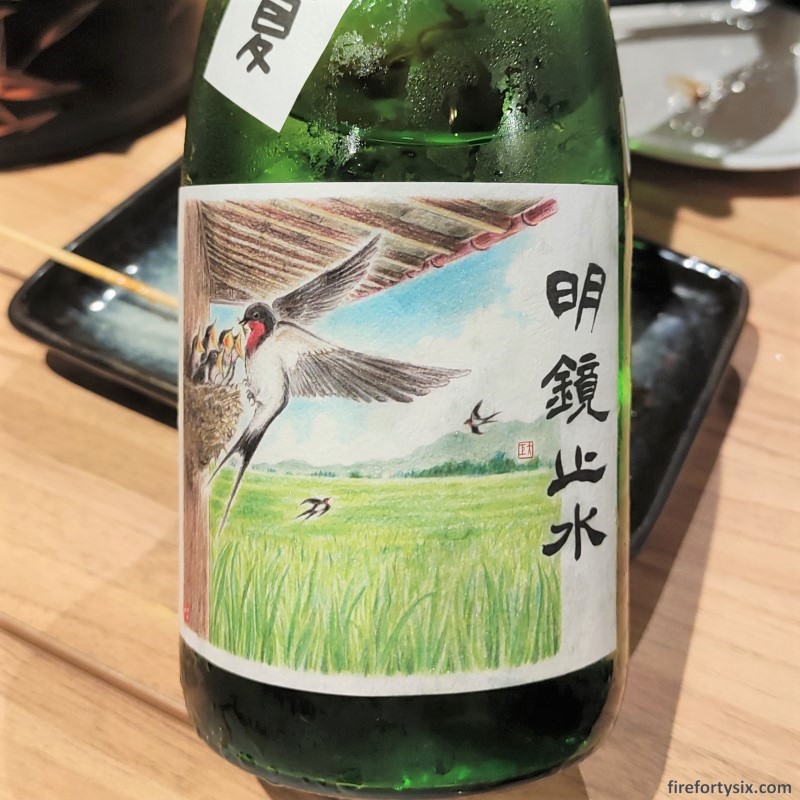
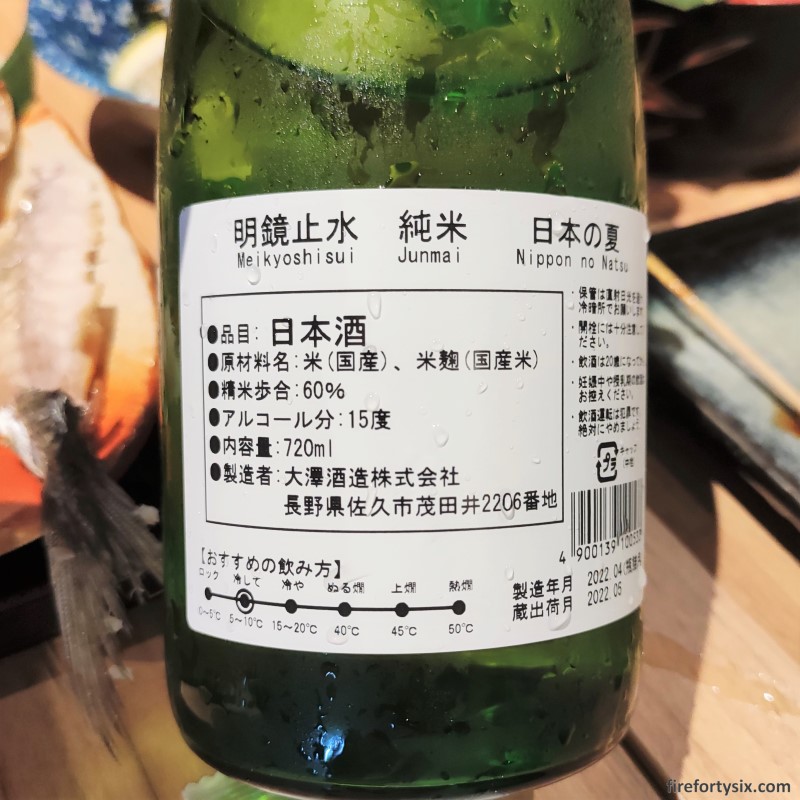
The brand was not familiar, but the dry, aromatic and clean flavour was reminiscent of the Tenryo Homare Ginjo Karakuchi that we had at Ippudo during the uni pairing. Which made sense since the Tenryo Homare also hailed from Nagano.
QY and RC were running a little late, so we ordered some light dishes to go with the sake. When they finally walked through the doors, we achieved our full dinner quorum and thus the no-holds barred, take-no-prisoners dinner ordering began.
We’re all fans of Japanese food and since we’ve not been able to visit for so many years, the plan that night was to order whatever we felt like eating, in whatever amount we could stomach.
The first item was, of course, the beautiful Sashimi DX Special assorted platter, which came with chutoro, otoro, kanpachi, sawara, kinmedai, tako, shirauo and aka bahun uni. It was a feast for the eyes, and everyone was visibly impressed when the platter was served.
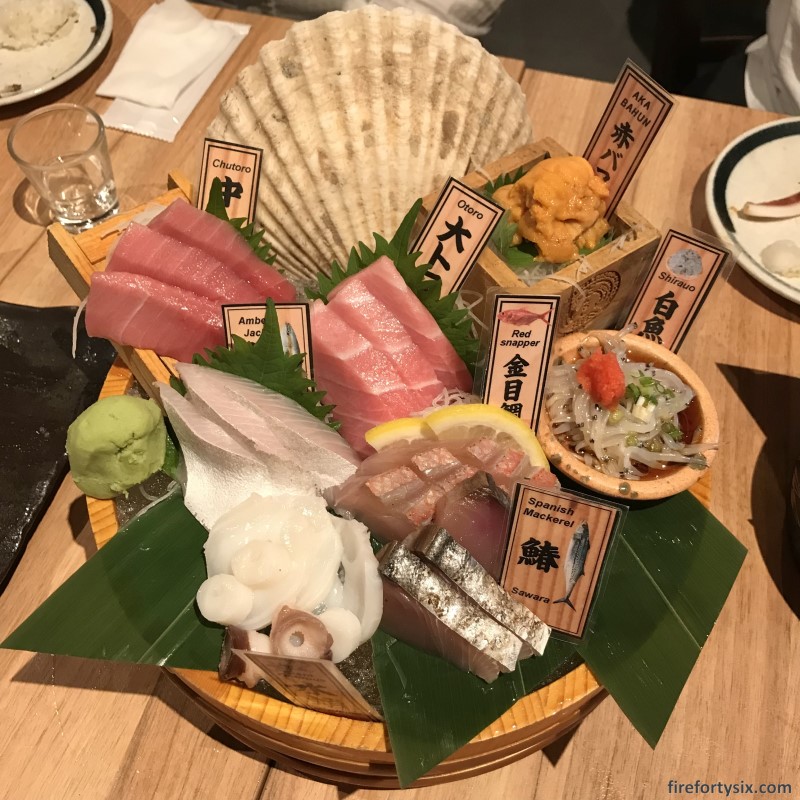
Making good on our promise to SL, even more uni arrived. In the form of and ki bahun and (more) aka bahun, which, as we were told, were the male and female versions of the spiny sea creatures.
I honestly couldn’t tell the difference between the two, but they were both equally jjinja oishii, which is a hybrid Korean/Japanese term for “how can reproductive organs be so tasty?”
In addition to having them as-is, I also scooped them onto my ikura gunkan sushi for an even more indulgent bite. SL copied what I did, and her blissful expression after wolfing it down confirmed that our friendship would remain intact.

The rest of the night was a blur of chatting, eating and re-ordering of whatever dishes caught our fancy. In true izakaya fashion, even though the menu was extensive, every item was good.
From the smokey ika BBQ, to the rich and dense ankimo ponzu, to the sweet and fruit-like tomatoes, to the cute and crispy deep-fried river shrimp, among the numerous items that we ordered that night.
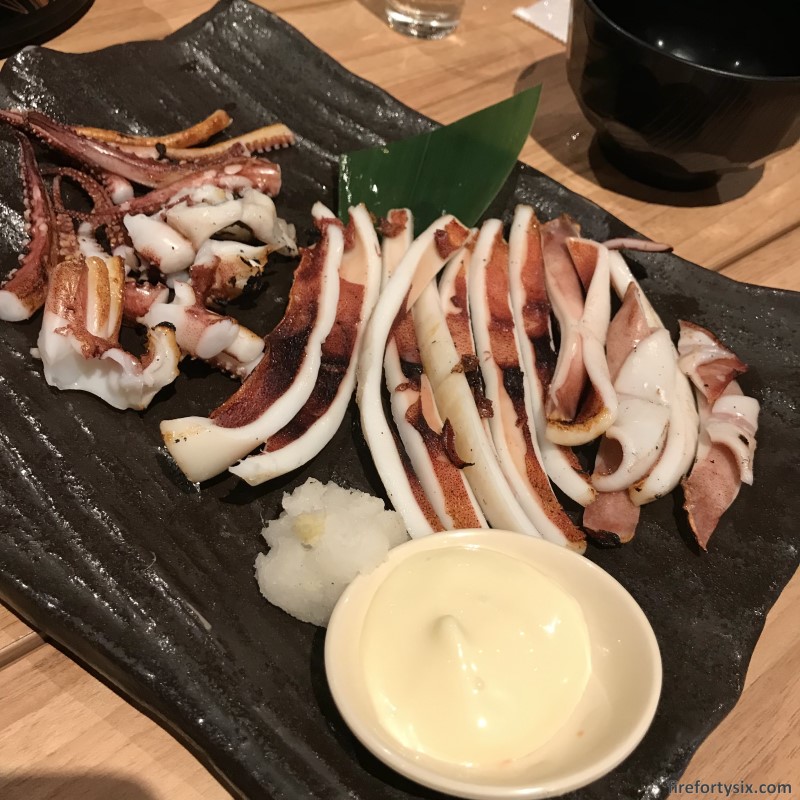
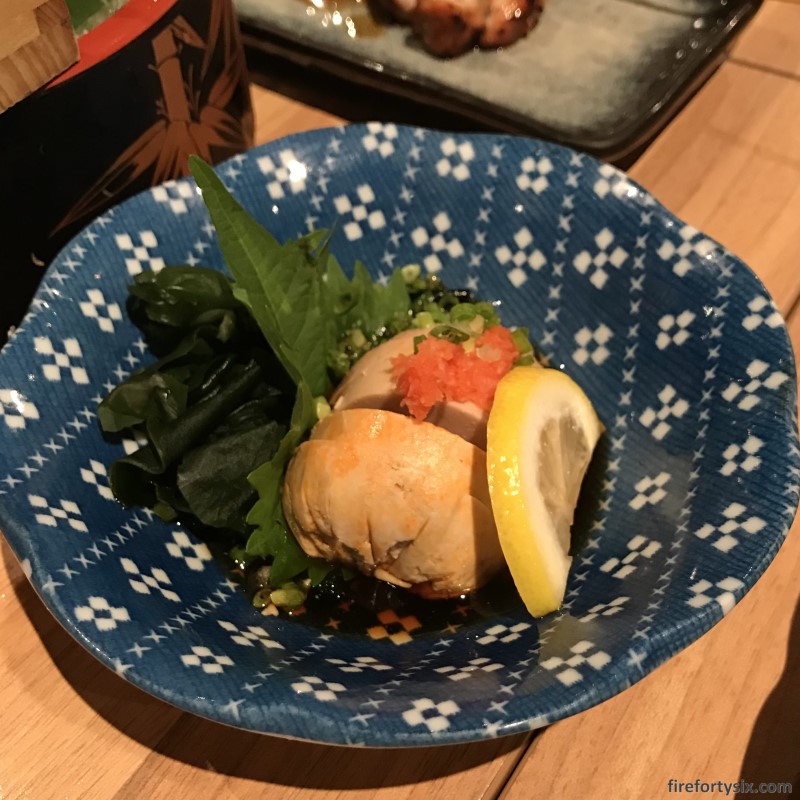
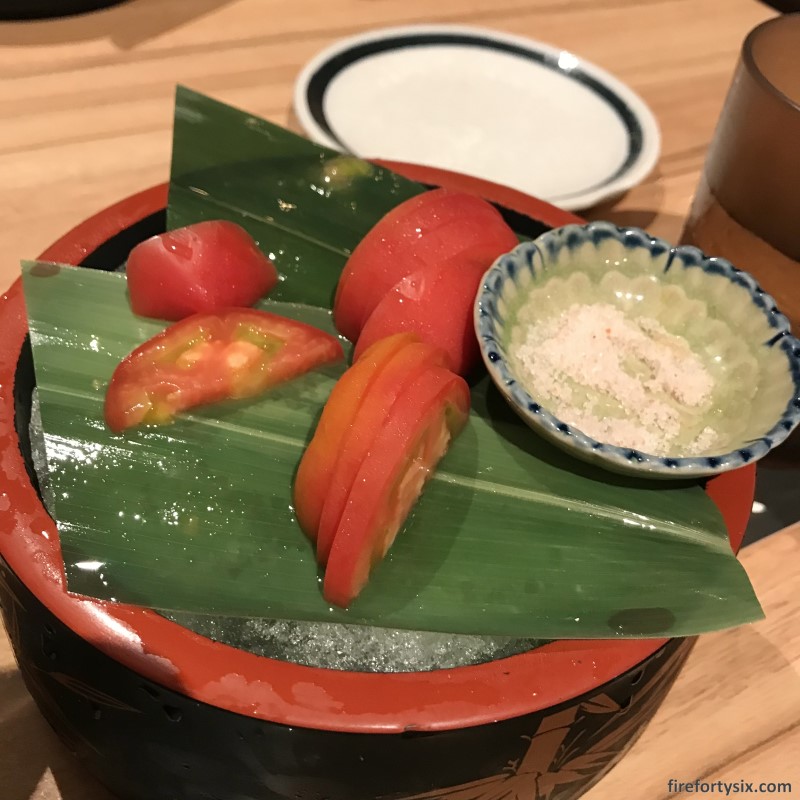
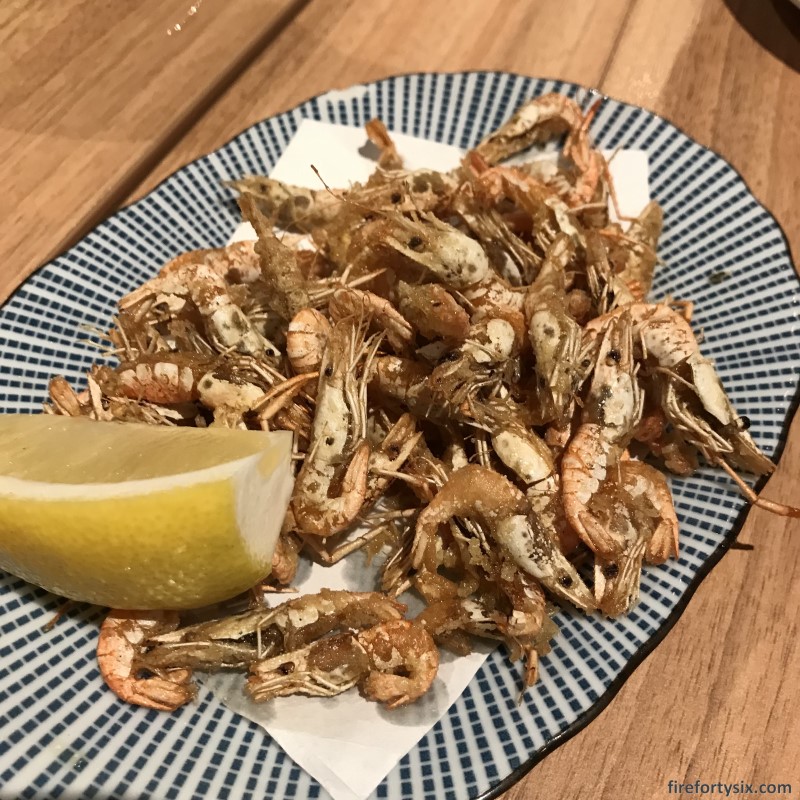
Throughout the entire dinner, JM was happily refilling all of our sake glasses, making sure that none of them remained empty. Which meant that our first bottle quickly ran out, and it was time for a second one.
We thanked the sake sommelier for his first recommendation and told him that we really liked the bottle. Another extensive consultation ensued, where he went through the relative merits and characteristics of several bottles, eventually settling on the Kamokinshu Tokubetsu Junmai 13 (賀茂金秀 特別純米酒 13) from Hiroshima.
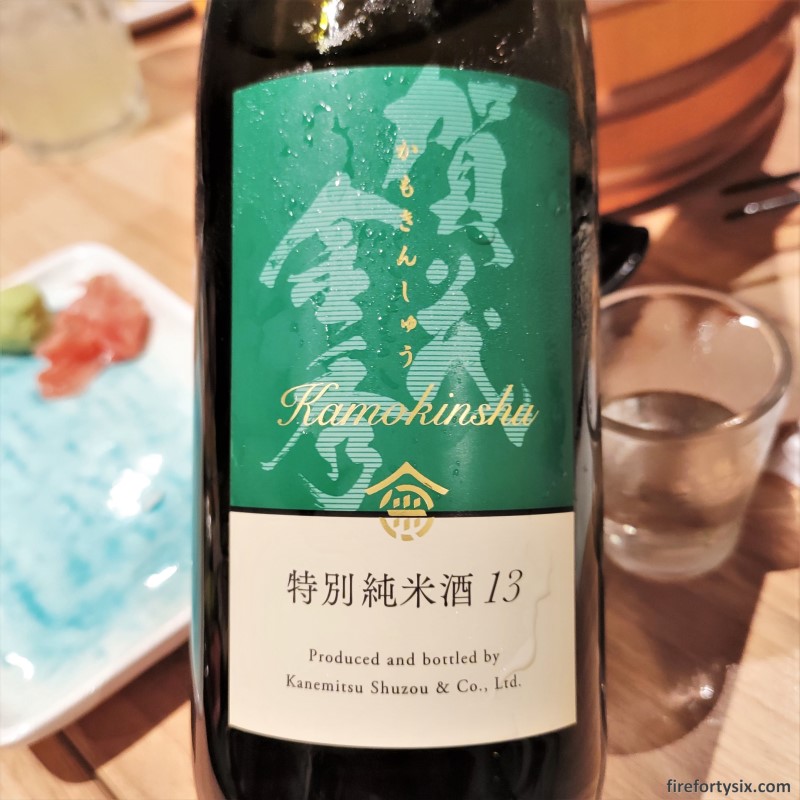
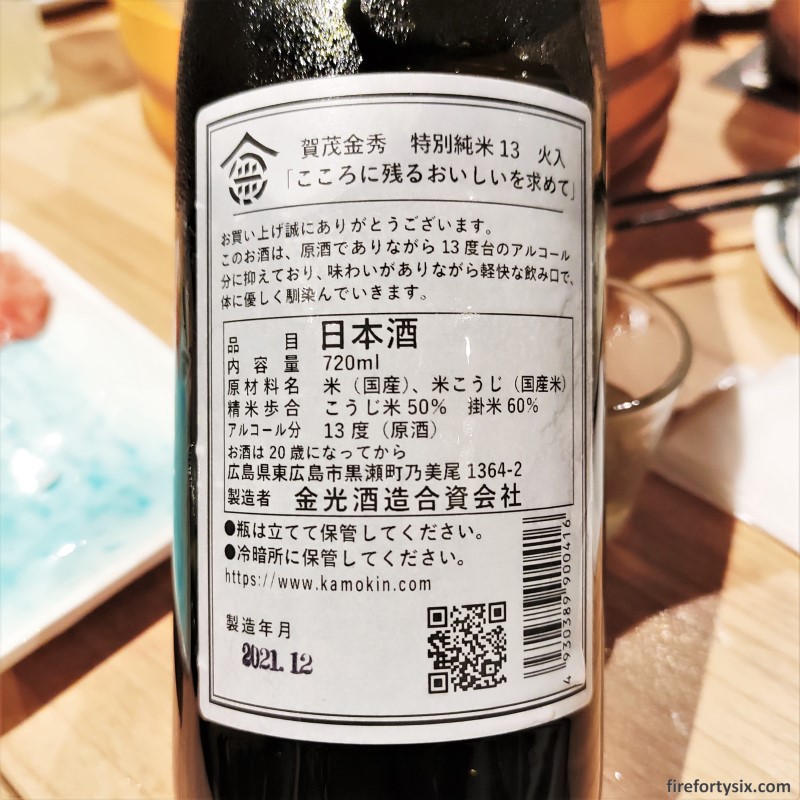
It turned out to be even better than the first bottle, slightly dry but very smooth going down. The lower than usual 13% alcohol no doubt helped make it very drinkable.
We’ve been drinking mostly junmai daiginjo sakes so far, and we’ve found several that have been wonderfully fruity, aromatic and delicious, but they haven’t paired that well with food.
The recommendations that night opened a new dimension to our sake journey, and introduced us to the wonders of exploring other categories beyond premium junmai daiginjos. Moving forward, I’ll definitely be looking out for more tokubetsu junmais to try.
Soon, it was time to call it a night and we put in our orders for dessert. The choices available for sweets at Niningashi are very limited and mainly revolve around a few flavours of daifuku. The rest of the table ordered a couple of them to share, but I stuck to my tried-and-tested dashimaki.
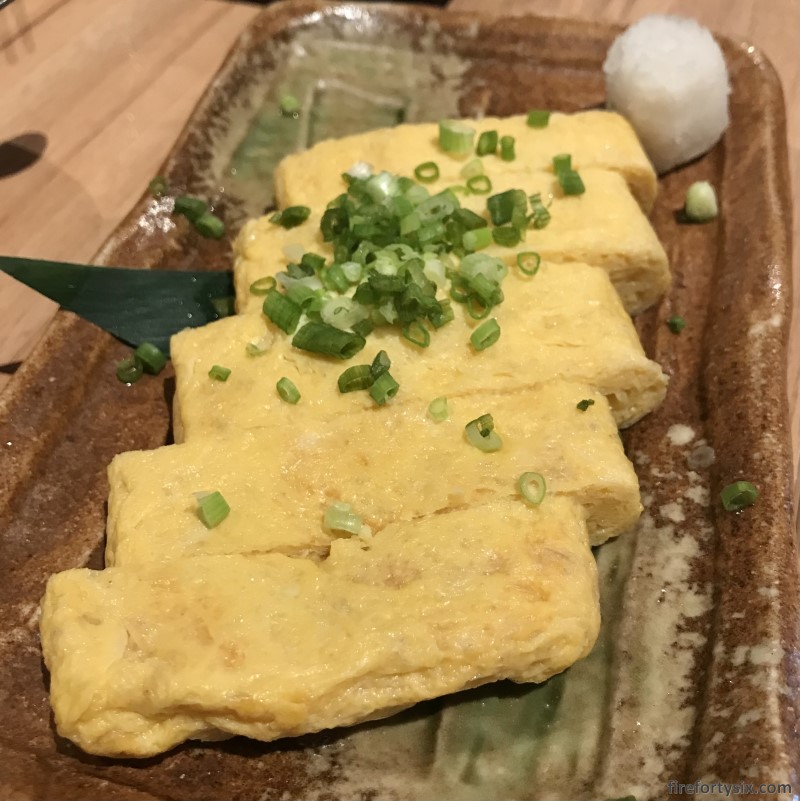
You might say that it’s not technically a dessert, but it has never failed me as the perfect ending to my many previous meals in Tokyo, especially at the lovely Izakaya Ajisen in Tsukishima. Even through the dashimaki at Niningashi doesn’t achieve the same level of fuwa-fuwa, it was still very good.
The damage that night, inclusive of two 720ml bottles of sake, was around S$600 after service charge and tax. At S$100 per adult for oishii Japanese sake and food, including generous portions of fresh sashimi and uni, it was well worth the money.
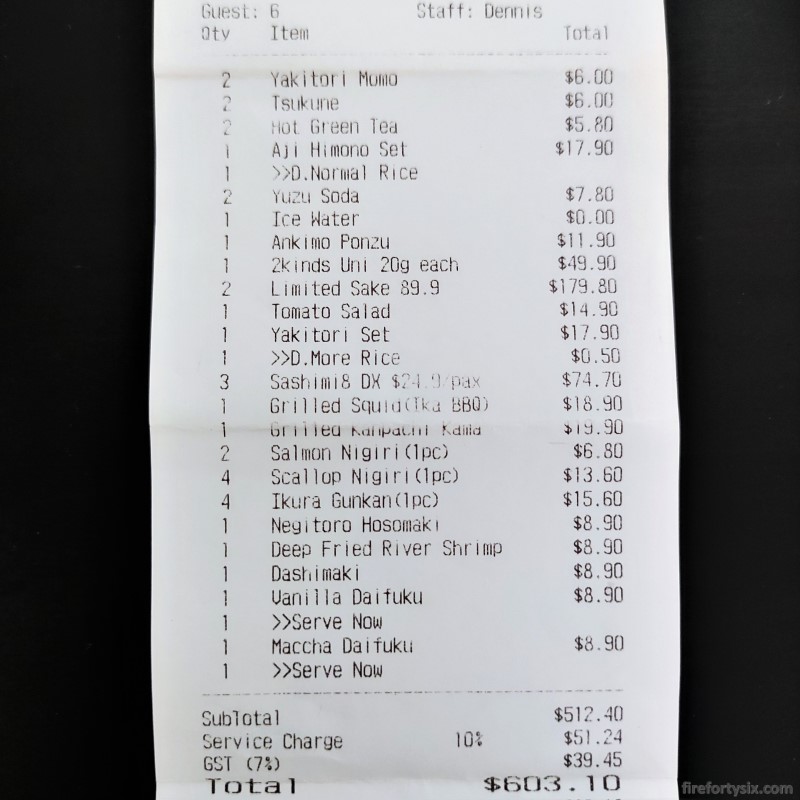
While Japan is now officially open for tourism again, it will probably take some time for capacity, service levels, and more importantly, prices, to normalise. So our next trip there probably won’t be happening anytime soon.
Until then, we’ll always have Izakaya Niningashi to satisfy our cravings.
